 W
WA debtors' prison is a prison for people who are unable to pay debt. Through the mid-19th century, debtors' prisons were a common way to deal with unpaid debt in Western Europe. Destitute persons who were unable to pay a court-ordered judgment would be incarcerated in these prisons until they had worked off their debt via labour or secured outside funds to pay the balance. The product of their labour went towards both the costs of their incarceration and their accrued debt. Increasing access and lenience throughout the history of bankruptcy law have made prison terms for unaggravated indigence obsolete over most of the world.
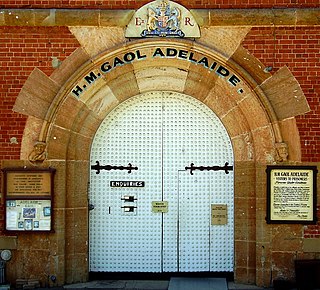 W
WAdelaide Gaol is a former Australian prison located in the Park Lands of Adelaide, in the state of South Australia. The gaol was the first permanent one in South Australia and operated from 1841 until 1988. The Gaol is one of the two oldest buildings still standing in South Australia, the other being Government House which was built at the same time. The prison is now a museum, tourist attraction and function centre.
 W
WThe Black Dog was a prison in Newhall Market, now Cornmarket, in Dublin, Ireland.
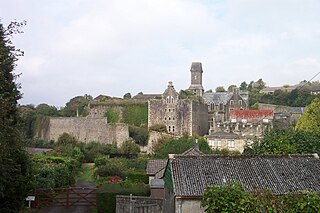 W
WBodmin Jail is a historic former prison situated in Bodmin, on the edge of Bodmin Moor in Cornwall. Built in 1779 and closed in 1927, a large range of buildings fell into ruin, but parts of the prison have been turned into a tourist attraction, and more recently another large part was converted into a hotel.
 W
WThe Boston Gaol (1635–1822) was a jail in the center of Boston, Massachusetts, located off Court Street, in the block bounded by School, Washington and Tremont Streets. It was rebuilt several times on the same site, before finally moving to the West End in 1822. Prisoners included Quakers, "witches," pirates, murderers, rebels, debtors, and newspaper editors.
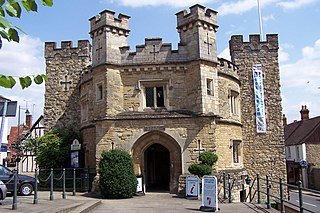 W
WBuckingham Old Gaol, sometimes known as Lord Cobham’s Castle, is an historic building in Buckingham, the former county town of Buckinghamshire, England.
 W
WThe Clink was a prison in Southwark, England, which operated from the 12th century until 1780. The prison served the Liberty of the Clink, a local manor area owned by the Bishop of Winchester rather than by the reigning monarch. As the Liberty owner, the Bishop kept all revenues from the Clink Liberty, and could put people in prison for failing to make their payments. As the Bishop, he could also imprison heretics. The Clink prison was situated next to the Bishop's London-area residence of Winchester Palace. The Clink was possibly the oldest men's prison and probably the oldest women's prison in England.
 W
WColdbath Fields Prison, also formerly known as the Middlesex House of Correction and Clerkenwell Gaol and informally known as the Steel, was a prison in the Mount Pleasant area of Clerkenwell, London. Founded in the reign of James I (1603–1625) it was completely rebuilt in 1794 and extended in 1850. It housed prisoners on short sentences of up to two years. Blocks emerged to segregate felons, misdemeanants and vagrants.
 W
WDalton Castle is a grade I listed 14th-century peel tower situated in Dalton-in-Furness, Cumbria, England, and in the ownership of the National Trust. It was constructed by the monks of Furness Abbey for the protection of the nearby market town, and was the building from which the Abbot administered the area and dispensed justice.
 W
WThe Debtors' Prison is a historic debtors' prison in Accomac, Virginia. Constructed in 1783 as a house for the Accomack County jailer, it is the oldest public structure in the county. It was converted to use as a debtors' prison in 1824, which purpose it served until 1849. The prison was added to the Virginia Landmarks Register and the National Register of Historic Places in 1976; along with structures in Worsham and Tappahannock, both in Virginia as well, it is one of only three debtors' prisons in the country on the National Register.
 W
WThe Debtors' Prison in Tappahannock, Virginia, is a historic debtors' prison dating back to the 18th century. Constructed sometime before 1769, it is one of three such structures remaining in Virginia, along with those in Accomac and Worsham. The prison building is a contributing structure to the Tappahannock Historic District, and as such was listed on the National Register of Historic Places in 1973.
 W
WThe Debtors' Prison is a historic debtors' prison building located in Worsham, Virginia. Constructed in 1787, it is one of three such prisons, all listed on the National Register of Historic Places, remaining in Virginia; the other two are in Accomac and Tappahannock. Of the three, only the one in Worsham was constructed of wood. It is the oldest surviving public building in Prince Edward County, and dates to the time when Worsham was the county seat.
 W
WThe Debtors' Prison Dublin is an historic building in Dublin’s north inner city. While it is listed on Dublin City Council's Record of Protected Structures, it was also included on the list of 'Top 10 Most-at-Risk' buildings, published by An Taisce in 2021.
 W
WFleet Prison was a notorious London prison by the side of the River Fleet. The prison was built in 1197, was rebuilt several times, and was in use until 1844. It was demolished in 1846.
 W
WThe Four Courts Marshalsea was a prison in Dublin, Ireland until 1874. The keeper of the prison was the Marshal of the Four Courts, a role filled after 1546 by the Constable of Dublin Castle.
 W
WThe Giltspur Street Compter was a compter or small prison, designed by English architect and surveyor George Dance the Younger, mainly used to hold debtors. It was situated in Giltspur Street, Smithfield, close to Newgate, in the City of London, between 1791 and 1853.
 W
WThe King's Bench Prison was a prison in Southwark, south London, England, from medieval times until it closed in 1880. It took its name from the King's Bench court of law in which cases of defamation, bankruptcy and other misdemeanours were heard; as such, the prison was often used as a debtor's prison until the practice was abolished in the 1860s. In 1842, it was renamed the Queen's Bench Prison, and became the Southwark Convict Prison in 1872.
 W
WLancaster Castle is a medieval castle in Lancaster in the English county of Lancashire. Its early history is unclear, but may have been founded in the 11th century on the site of a Roman fort overlooking a crossing of the River Lune. In 1164, the Honour of Lancaster, including the castle, came under royal control. In 1322 and 1389 the Scots invaded England, progressing as far as Lancaster and damaging the castle. It was not to see military action again until the English Civil War. The castle was first used as a prison in 1196 although this aspect became more important during the English Civil War. The castle buildings are owned by the British sovereign as Duke of Lancaster, part of the structure is used to host sittings of the Crown Court.
 W
WLifford Courthouse is a judicial building situated in the centre of Lifford, County Donegal, in Ulster, Ireland.
 W
WLincoln Castle is a major Norman castle constructed in Lincoln, England, during the late 11th century by William the Conqueror on the site of a pre-existing Roman fortress. The castle is unusual in that it has two mottes. It is one of only two such castles in the country, the other being at Lewes in East Sussex. Lincoln Castle remained in use as a prison and court into modern times and is one of the better preserved castles in England; the Crown Courts continue to this day. It is open to the public most days of the week and possible to walk around the walls from which there are views of the castle complex, cathedral, the city, and surrounding countryside. The castle is now owned by Lincolnshire County Council and is a scheduled monument.
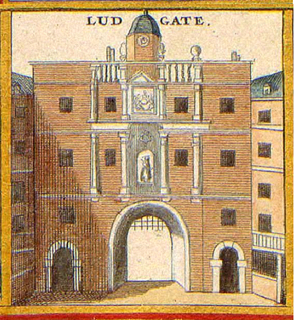 W
WLudgate was the westernmost gate in London Wall. The name survives in Ludgate Hill, an eastward continuation of Fleet Street, Ludgate Circus and Ludgate Square.
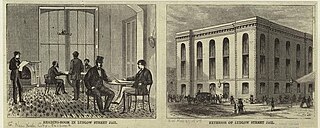 W
WThe Ludlow Street Jail was New York City's Federal prison, located on Ludlow Street and Broome Street in Manhattan. Some prisoners, such as soldiers, were held there temporarily awaiting extradition to other jurisdictions, but most of the inmates were debtors imprisoned by their creditors. Seward Park Campus now sits on the site of the jail.
 W
WThe Marshalsea (1373–1842) was a notorious prison in Southwark, just south of the River Thames. Although it housed a variety of prisoners, including men accused of crimes at sea and political figures charged with sedition, it became known, in particular, for its incarceration of the poorest of London's debtors. Over half the population of England's prisoners in the 18th century were in jail because of debt.
 W
WThe County Gaol, situated in North Parade, Monmouth, Wales, was Monmouthshire's main prison when it was opened in 1790. It served as the county jail of Monmouthshire and criminals or those who fell foul of the authorities were hanged here until the 1850s and some 3,000 people viewed the last hanging. The jail covered an area of about an acre, with a chapel, infirmary, living quarters and a treadmill. It was closed in 1869. In 1884 most of the building was demolished, and today nothing remains but the gatehouse which is a Grade II listed building. Within the gatehouse, there exists "a representation in coloured glass of the complete original buildings". It is one of 24 buildings on the Monmouth Heritage Trail.
 W
WNewgate Prison was a prison at the corner of Newgate Street and Old Bailey Street just inside the City of London, England, originally at the site of Newgate, a gate in the Roman London Wall. Built in the 12th century and demolished in 1904, the prison was extended and rebuilt many times, and remained in use for over 700 years, from 1188 to 1902.
 W
WNewgate Prison was a place of detention in Dublin, Ireland. It was initially located at Cornmarket, near Christ Church Cathedral, on the south side of the Liffey and was originally one of the city gates before being moved to a new purpose built prison on Green Street on the North side of the city in 1781. The prison finally closed in 1863 while the building was demolished in 1893. The site today contains Saint Michan's Park while the remains of the prison's boundary walls still form part of the boundary of the park.
 W
WNorwich Castle is a medieval royal fortification in the city of Norwich, in the English county of Norfolk. It was founded in the aftermath of the Norman conquest of England when William the Conqueror (1066–1087) ordered its construction because he wished to have a fortified place in the town of Norwich. It proved to be one of his two castles in East Anglia, the other being Wisbech. In 1894 the Norwich Museum moved to Norwich Castle and it has been a museum ever since. The museum & art gallery holds significant objects from the region, especially works of art, archaeological finds and natural history specimens.
 W
WThe Old Melbourne Gaol is a former jail and current museum on Russell Street, in Melbourne, Victoria, Australia. It consists of a bluestone building and courtyard, and is located next to the old City Police Watch House and City Courts buildings. It was first constructed starting in 1839, and during its operation as a prison between 1845 and 1924, it held and executed some of Australia's most notorious criminals, including bushranger Ned Kelly and serial killer Frederick Bailey Deeming. In total, 133 people were executed by hanging. Though it was used briefly during World War II, it formally ceased operating as a prison in 1924; with parts of the jail being incorporated into the RMIT University, and the rest becoming a museum.
 W
WThe Old York Gaol is a former colonial prison at Lindsay Road and Main Street in York, Maine. Its oldest portion dating to about 1720, it is one of the oldest prison buildings in the United States, and one of the oldest public buildings in the state of Maine. It was designated a National Historic Landmark in 1968. It is owned by the Museums of Old York and is open for tours between May and October.
 W
WPoultry Compter was a small prison that stood at Poultry, part of Cheapside in the City of London. The compter was used to lock up minor criminals and prisoners convicted under civil law and was run by the City's Sheriff. It operated from the 16th century until 1815. It was pulled down in 1817 and replaced with a chapel.
 W
WRuthin Gaol is a Pentonville style prison in Ruthin, Denbighshire. Ruthin Gaol ceased to be a prison in 1916 when the prisoners and guards were transferred to Shrewsbury. The County Council bought the buildings in 1926 and used part of them for offices, the county archives, and the town library. During the Second World War the prison buildings were used as a munitions factory, before being handed back to the County Council, when it was the headquarters of the Denbighshire Library Service. In 2004 the Gaol was extensively renovated and reopened as a museum.
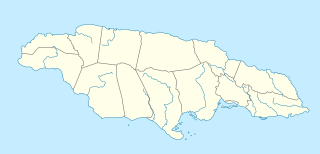 W
WThe Old Jail in Saint Ann's Bay is said to have been the very first prison in Jamaica. Built as a fort c. 1750, it was declared useless in 1795 as the sea was encroaching. It was then converted into a jail and house of correction. The jail had solitary cells, a treadmill, a separate room for lunatics, a room for debtors, a 'hospital', and a jailers' quarters. Many slaves died there.
 W
WSt Briavels Castle is a moated Norman castle at St Briavels in the English county of Gloucestershire. The castle is noted for its huge Edwardian gatehouse that guards the entrance.
 W
WWhitecross Street Prison was a debtors' prison in London, England. It was built between 1813–15 to ease overcrowding at Newgate Prison and closed in 1870, when all of the prisoners were transferred to the newly built Holloway Prison.
 W
WThe Wood Street Compter was a small prison within the City of London in England. It was primarily a debtors' prison, and also held people accused of such misdemeanours as public drunkenness, although some wealthier prisoners were able to obtain alcohol through bribery. The prison was built and opened in 1555, replacing the earlier Bread Street Compter, from which many prisoners were transferred. Wood Street was closed and replaced by Giltspur Street Compter in 1791.
 W
WYork Debtor's Prison is a former Debtor's prison and Grade I Listed building located in York, North Yorkshire. Since 1952 it has been part of the York Castle Museum.